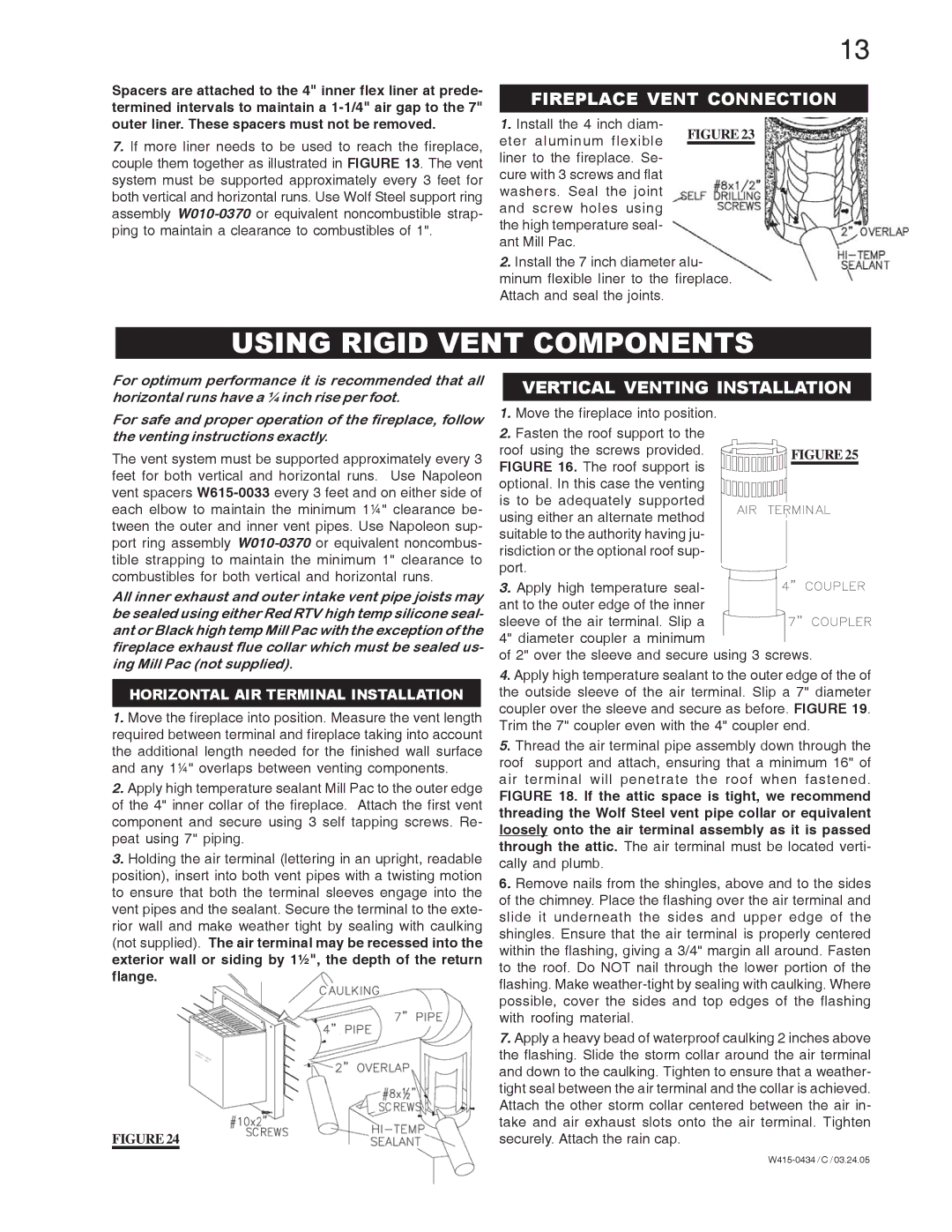GD70PT-S, GD70NT-S specifications
The Napoleon Fireplaces GD70NT-S and GD70PT-S are exemplary models that elevate the standard for modern gas fireplaces. Combining sophistication with advanced technology, these units are designed for homeowners seeking both aesthetic appeal and functional efficiency.One of the standout features of the GD70NT-S and GD70PT-S is their large viewing area. The spacious firebox allows for a stunning display of flames, creating a captivating focal point in any room. Both models offer a sleek design that complements various interior styles, from contemporary to traditional, ensuring versatility in decor.
The GD70NT-S is designed for natural gas operation, while the GD70PT-S is equipped for propane, allowing users to choose the fuel type that best fits their needs. This adaptability makes both models an excellent choice for different households. With their advanced heat exchanger, these fireplaces maximize heat output while minimizing energy consumption, contributing to a more environmentally friendly heating solution.
As for efficiency, the GD70NT-S and GD70PT-S boast impressive ratings, allowing homeowners to enjoy the comforting ambiance of a fireplace without unnecessarily high energy bills. Their electronic ignition systems provide easy startup, ensuring that warmth is just a button press away, even during cold winter months.
Safety is another critical consideration in the design of these fireplaces. The units come with a safety screen that prevents accidental contact with hot surfaces, while built-in flame sensors ensure that the fireplace operates safely and effectively. These features offer peace of mind, making them a reliable choice for family homes.
Moreover, Napoleon has incorporated cutting-edge technologies in these models, such as a modulating flame feature that allows users to adjust the fire's intensity according to their comfort needs. The remote control option provides added convenience, letting users operate their fireplace from a distance with ease.
In conclusion, the Napoleon Fireplaces GD70NT-S and GD70PT-S are remarkable options for anyone looking to enhance their living space with a high-quality gas fireplace. With their elegant designs, energy-efficient performance, and advanced safety features, these models represent the perfect blend of functionality and style, making them an excellent investment for any home. Whether for heating purposes or creating an inviting ambiance, the GD70 series stands out as a premier choice.

